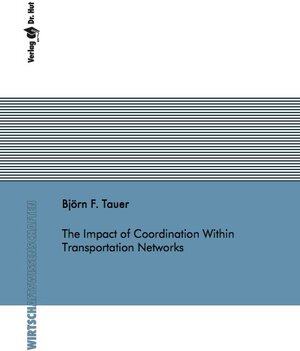
×
![Buchcover ISBN 9783843945455]()
The Impact of Coordination Within Transportation Networks
von Björn F. TauerWe consider transportation models and address problems that arise naturally within those setups. Hence, we investigate scheduling and routing problems as well as simulate network flows using techniques from transport simulation, algorithmic game theory and computational complexity. The combination of those techniques allows a detailed focus on the behavioral component of transportation scenarios. Due to the zoom onto single individuals, we can describe the interaction of all participants very detailed and thus can analyze the interaction within the transportation networks.
The Transportation Simulation part considers the scenario where a ride-sharing provider enters the urban transport market of Aachen. We use a simulation-based methodology that allows to investigate various aspects regarding the service parameters of such a ride-sharing operator like its service area, its fleet size, the impact of electric engines or the price level of the trips. Since our simulation covers all existing transportation modes, we are able to simulate the interplay of these existing services with the new ride-sharing operator and are able to predict its acceptance.
The Theoretical Analysis of Network Traffic part considers a game-theoretic variant of packet routing. In the investigated competitive games, discrete packets are routed selfishly through a network over time and scheduling mechanisms organize which packets are forwarded first. We investigate if the interplay of the selfish players may harm the overall performance.
In the Theoretical Analysis for Trains part, we introduce a packet routing model for railway systems. We study the question if there is a feasible schedule that allows all trains to reach their target depot without blocking each other. We vary between a routing problem, where routes have to be determined, and the scheduling variant, where the paths are initially given and only the time windows when a train should traverse a track section have to be determined.
The Transportation Simulation part considers the scenario where a ride-sharing provider enters the urban transport market of Aachen. We use a simulation-based methodology that allows to investigate various aspects regarding the service parameters of such a ride-sharing operator like its service area, its fleet size, the impact of electric engines or the price level of the trips. Since our simulation covers all existing transportation modes, we are able to simulate the interplay of these existing services with the new ride-sharing operator and are able to predict its acceptance.
The Theoretical Analysis of Network Traffic part considers a game-theoretic variant of packet routing. In the investigated competitive games, discrete packets are routed selfishly through a network over time and scheduling mechanisms organize which packets are forwarded first. We investigate if the interplay of the selfish players may harm the overall performance.
In the Theoretical Analysis for Trains part, we introduce a packet routing model for railway systems. We study the question if there is a feasible schedule that allows all trains to reach their target depot without blocking each other. We vary between a routing problem, where routes have to be determined, and the scheduling variant, where the paths are initially given and only the time windows when a train should traverse a track section have to be determined.


